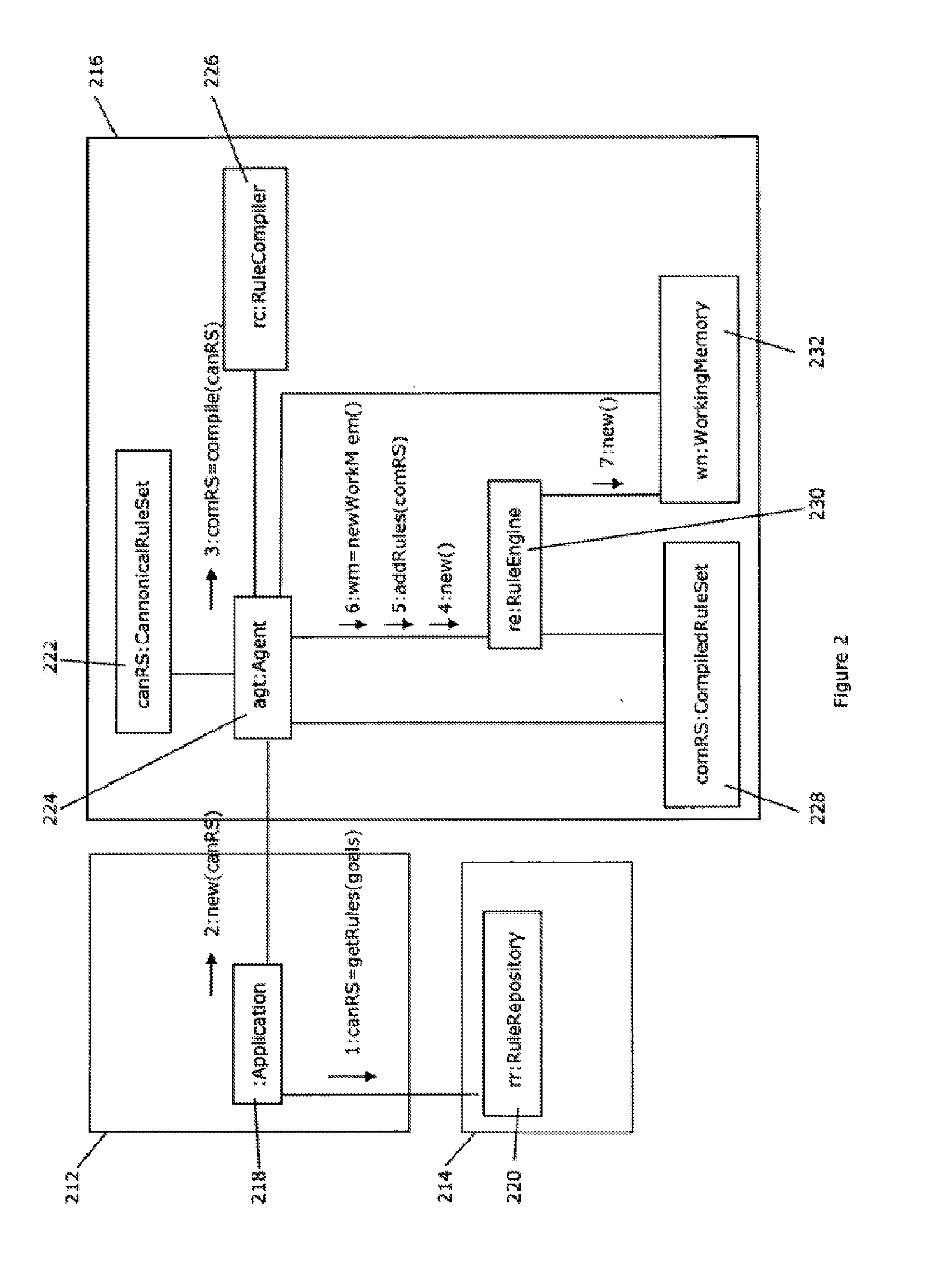Survival rule usage by software agents
a software agent and survival rule technology, applied in the field of software agents, can solve the problems of nave approach, no or more rules firing, and limited approach,
- Summary
- Abstract
- Description
- Claims
- Application Information
AI Technical Summary
Problems solved by technology
Method used
Image
Examples
Embodiment Construction
Construction
[0047]Agents which utilize rule based systems may be constructed locally or remotely. In order to operate, these agents need an initial set of canonical rules that can be compiled and loaded into an associated rule engine. These rules can either be supplied at construction or a rule repository location can be supplied so that the rules may be fetched during construction or at a later time.
[0048]Referring now to FIG. 1, a diagram illustrating an exemplary process of constructing an agent locally with a set of canonical rules supplied during construction is shown. An application 110, in an execution environment 112, requests a set of rules for an agent from a rule repository 116 based on the goals of the agent that is being created. The result is a collection of canonical rules, known as a rule set 118. The rule set 118 is passed to the agent 120 during construction. The agent 120 takes the rule set 118 and requests that it be compiled by the local rule compiler 122. This ...
PUM
 Login to View More
Login to View More Abstract
Description
Claims
Application Information
 Login to View More
Login to View More - R&D
- Intellectual Property
- Life Sciences
- Materials
- Tech Scout
- Unparalleled Data Quality
- Higher Quality Content
- 60% Fewer Hallucinations
Browse by: Latest US Patents, China's latest patents, Technical Efficacy Thesaurus, Application Domain, Technology Topic, Popular Technical Reports.
© 2025 PatSnap. All rights reserved.Legal|Privacy policy|Modern Slavery Act Transparency Statement|Sitemap|About US| Contact US: help@patsnap.com



